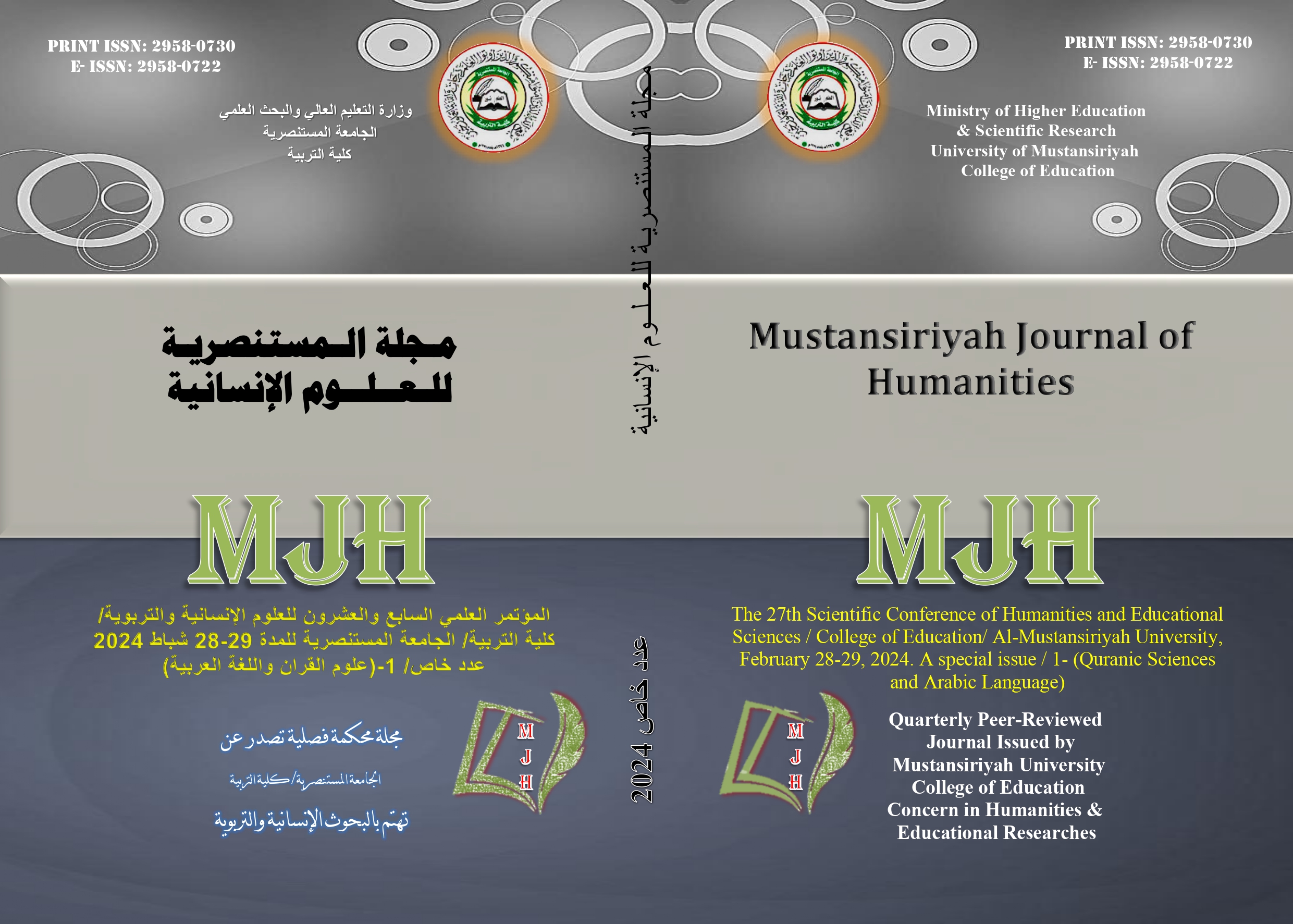The structure of place in travel narratives Ibn Jubayr's journey as an example
2024, Volume 1قسم علوم القرآن والتربية الإسلامية+قسم اللغة العربية, Issue مجلة المستنصرية للعلوم الإنسانية / عدد خاص لمؤتمر كلية التربية - التخصصي السابع والعشرون للعلوم الإ, Pages 358-362
Abstract
When textual practice evokes a place, it is based on creating mental and imaginative images that are absent from the sensory dimension of the place, and reshaping it in dimensions related to the creator’s focus of the sensory image of the place in a creative structure.“Therefore, the interaction of places at their imagined level is considered an essential component of textual practice with its artistic visions, aesthetic data, and semantic extensions. Conceiving this interaction in the context of its textual employment requires taking into account the overlap between its real and imagined dimensions in reference to its movement, especially when it comes to the matter. “With a special type of writing represented in travel literature, which by definition is considered a kind of autobiography.”The blogs of travel literature in the ancient Arab heritage are one of the blogs that are problematic in naturalization. While some saw them as mere geographical documentation of personal observations, others saw them as blogs “with social and political data about a specific period.”Some of them were confused and did not differentiate between the journey, the message, the restriction, the composition, the memorandum, and the classificationDespite the different approaches to the blogs of Arab travelers - and they are few - they did not explore - except what is rare - their narrative structure, which is a clearly prominent structure in these texts, whether it was intended for its own sake or otherwise.Despite the openness of the nomadic text to immanent texts in Arabic blogs, this text retains its own structure that distinguishes it from other Arabic blogs and gives it its distinctive character.In the travelogue text, the traveler tries to perceive reality from his point of view, that is, through his perception of the external world, not as it is on the outside, but as it sees it with his own eyes, as he is a writer and storyteller in addition to being a traveler. He also tries - at the same time - to build a harmonious perception of the world. He is able to explain the natural and unnatural phenomena that he sees on his real journey and which he often recounts later in his blog, which is not at all free from imagination. Just like any creative and literary work.The travel text worked on combining the geographical function with the literary function. The presence of the geographer was not separate from the presence of the literary; The place, with its geographical structure, turns the work of the traveler into a student of geography. However, in order for the traveling writer not to become immersed in geography, he resorts to his literary work, and in his view the geography merges with the literary in narrative and description. Indeed, in many cases, the matter is not devoid of approaching the geographical name with suggestions of the predicates of the meaning that the name carries, and there is no clearer evidence of this in Ibn Jubayr’s journey than his description of Harran and Ras al-Ain.In this research paper, we attempt to reveal the structure of place in the travel text through the narration of Ibn Jubayr on his famous journey, the literary nature of this spatial representation narratively, and the functional relationships while it is geographical and what is literary.
Metrics


